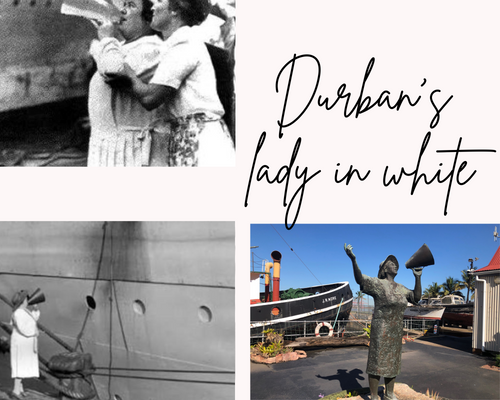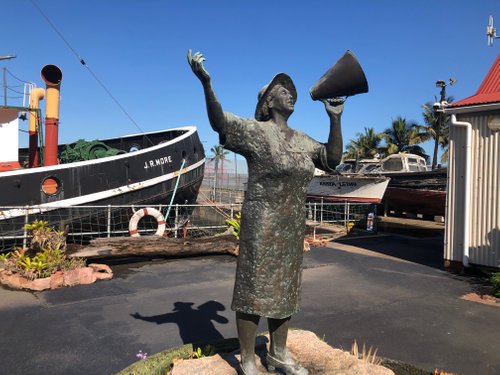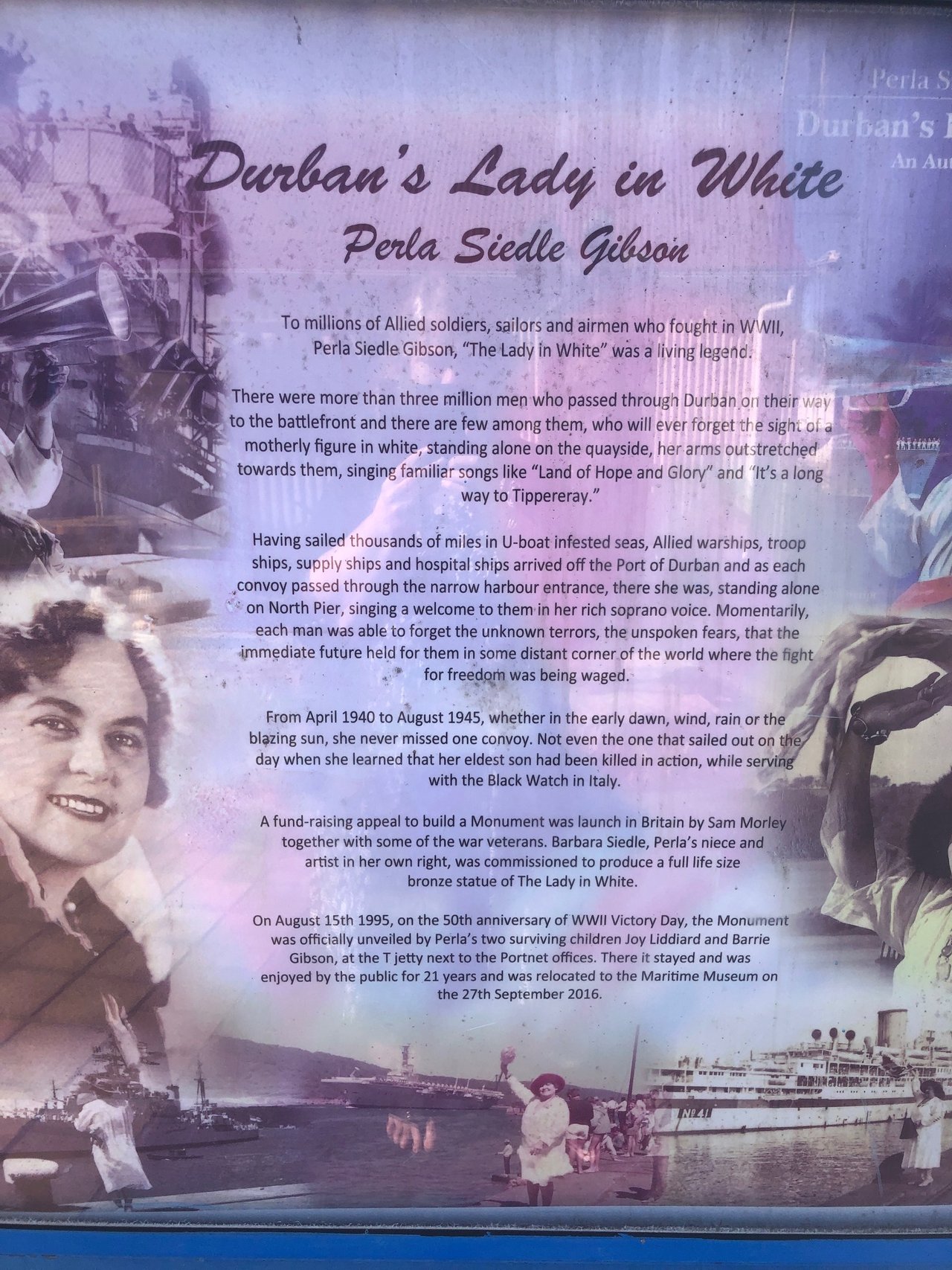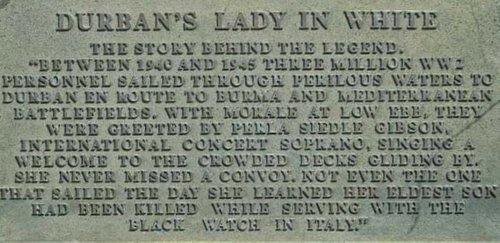
Durban's Lady in White
"A woman with a voice is, by definition, a strong woman. But the search to find that voice can be remarkably difficult." Melinda Gates, philanthropist and wife of Bill Gates.
After a year of staying at the coast, it was time for the family to visit one of the four biggest cities in South Africa, Durban, in the province of Kwa-Zulu Natal. A trip we've been planning to do but just never had the time for it.
On my bucket list for our trip was a visit to the harbor and the Maritime museum, as the last time I was at this museum I was very small. It was during one of our family vacations.
This time around, I got to know more about "Durban’s Lady in White."
Meet Perla Siedle Gibson, who was born in 1888 in the city of Durban.
Although she grew up in Durban, she studied music and art in England and the USA. As a soprano she had various performances in London and New York. She returned to her family home in South Africa where she got married and had her children.
Her father was a well-known shipping agent with the result that she was familiar with the ins and outs of the harbor. It was the harbor of Durban and not her singing in theatres of the world that would make her famous.
During World War II, Durban’s harbor became a very busy port for ships as it was basically halfway between America and the East. With her father running his business at the harbor, it was no surprise that the family would entertain some of the captains, businessmen, officials, and soldiers at their home. It was on one of these occasions that Perla entertained some guests with her singing. Something that South Africans are known for is their hospitality.

Photo taken at the Port Natal Maritime Museum
The next day she accompanied a young soldier to the ship that was to leave the harbor for the war. As the ship was sailing out, the young man shouted at her asking her to sing a song. As he was Irish, she sang the song "When Irish Eyes are Smiling," a song by Bing Crosby.
When Irish eyes are smiling
Sure 'tis like a morn in spring
In the lilt of Irish laughter
You can hear the angels sing
When Irish hearts are happy
All the world seems bright and gay
And when Irish eyes are smiling
Sure they steal your heart away
That was her first song, but not her last.
She stood on the harbor in her white dress and red hat, singing for five years to each ship, U-boats, supply ships, and hospital ships on departure. Neither the time of day nor the weather conditions mattered to her. In the time period of the war, it is recorded that she sang to more than 5,000 ships and thousands of men, putting them at ease for the moment and making them forget their fears for the unknown.
The songs she sang often included;
• Land of Hope and Glory
• It’s a long way to Tipperay
As I stood there at the harbor museum looking at her statue I could hear her and I could see the tears streaming down the cheeks of the young men as they sang along and waved her goodbye. It must have been incredible moments.
 Photo of the information board
Photo of the information boardWhat gave me goosebumps was when I read on the information board by her statue that she even sang on the day that she received the news that one of her sons had passed away during his battle in the war. Remarkable!
This bronze statue of hers was unveiled on the 50th anniversary of World War II on 15 August 1995.
The statue was also visited by the Queen of England on one of her visits to South Africa. On the base of the statue, it is written;
"Prior to its unveiling on August 15th 1995, this monument was placed alongside HMS "Britannia" in Durban Harbour, to be viewed by Her Majesty Queen Elizabeth II and H.R.H. the Duke of Edinburgh during their State Visit to Durban on March 24th, 1995."

The plaque at the bottom of the statue
This is the story of one remarkable woman and just one of many women who made a difference in the lives of others.
Ladies, let your voices be heard!
References:
- The information board at the statue
- Perla Siedle Gibson - Wikipedia


